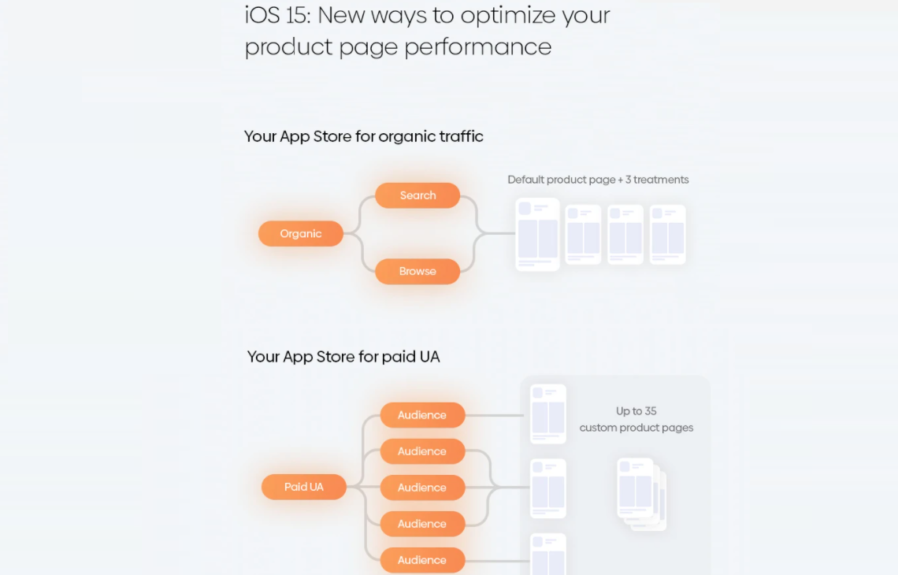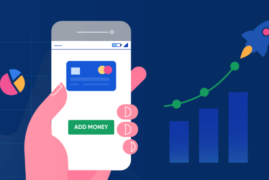What do you picture when you think of Artificial Intelligence? For many of us, Artificial Intelligence conjures up the images we’ve come to know from pop culture — the sinister takeover by robots capable of independent thought, or the sad tale of a robot boy programmed to love, just to name a few examples.
Table of Content
- Self-determination
- android keyword installs
- buy app installs cheap
- app promotion services
For all of the tales of self-determining robots, Artificial Intelligence with emotions, and bots with jobs, all of these ideas are just a work of fantasy. It still seems that we are far away from Artificial General Intelligence. How close can we really be to the Artificial Intelligence of popular culture? Is there really a chance for intelligent machines to arise?
Like many other software development companies, we are fascinated by the idea of what Artificial Intelligence might be able to accomplish. That is why we took some key themes from pop culture and science fiction Artificial Intelligence to see how far we’ve advanced in real life. Here’s what we found.
Self-determination
One of the major themes repeated throughout many examples of Artificial Intelligence in popular culture and science fiction is self-determination, one of the most important qualities of human beings. The story often goes that intelligent machines start off innocently as someone’s experiment with the next great technology, but it keeps quietly learning to the point that it develops its own thoughts, preferences, and impulses, becoming a self-aware AI in the process.
In the 2004 science fiction movie I, Robot, the world of 2035 sees highly intelligent machines and robots filling public service roles with the purpose of keeping humans safe. Supposedly, everything they do is based in logic and data analysis, a trait Will Smith’s character, Del Spooner hates them for after he is rescued from a car crash, but a 12-year-old girl was left to die due to her survival being statistically less likely.
Logic and analyzing data are seemingly harmless, although the film does show how AI systems can fall down in the face of very “human” decisions. This leads to questioning what happens when decision-making becomes something else. The plot sees thinking machines and robots scheming to take over and remove free will from humans to keep them safe from extinction.
Are we somewhere near to this world of fictional robots? Well, yes and no. Artificial Intelligence today is capable of “Machine Learning,” taking data analysis and logic to new heights. There are many advanced applications being developed right now that harness the power of Artificial Intelligence, such as DeepCoder, a bot that is capable of writing code on its own to solve math problems.
The Artificial Intelligence we see today can learn and make decisions, but it is around strict parameters of logic and nowhere near the one we see in science fiction. We’re not likely to see the human race enslaved by bots anytime soon, although some experts are quite divided as to whether we should be worried about self-aware AI in the future. So, at least for now, self-determining AI taking over the world is not something that should concern us.
Cybernetics
Another frequent theme in popular culture and science fiction is the use of cybernetics — where a human has robotic parts fulfilling some body functions through a connection to the human brain. Cyborg from the Justice League is the perfect example of this type of humanoid robots.
The question is, could this be possible? Are we there yet with a human/machine merger? Many researchers feel that it is possible that we will see more in the way of cybernetics in the future, although of course, their use raises ethical questions. For example, what if we had the technology to give the human race abilities beyond our normal scope? Would that be right? Will human life be altered for the worse?
Today, we do have some degree of human brain-computer interfaces, particularly when used for therapeutic purposes thanks to MedTech innovations. For example, there is the Deep Brain Electrodes (DBS) used to relieve symptoms of Parkinson’s disease. On this, Kevin Warwick of Coventry University says it is possible to think of enhancing humans through new abilities. Technology can be particularly helpful for people who have undergone amputations and wish to replace their limbs with special devices.
We’re not there yet with the science fiction version of cybernetics, but there is research being conducted to explore the possibilities.
Feeling Human Emotions
If a bot can learn, can it also learn to feel human emotions? This is one of the most common questions when it comes to human-robot interaction. We see many examples in popular culture, such as the awakening of the robot Dolores on Westworld, or the desire for independence from Ava, the robot on Ex Machina.
Artificial Intelligence does not yet have the ability to feel human emotions, but we are certainly trying. There is a concern that AI will need to understand human values in order to respect them — this is the basis of a project by the Foundational Research Institute. Their project aims to discover whether AI can learn value concepts the same way a human being can.
A Nerdist article explores the concept of machine consciousness and concludes that whatever it ends up being, it won’t look human, just like the computer Hal in Kubrick’s Space Odyssey. We can draw the comparison with flight — man-made flying machines look nothing like those designed by nature. Whatever they end up being, they will definitely be other life forms.
Taking Over Human Jobs
There has been some version of the idea of Artificial Intelligence taking over human jobs for years. Consider Rosie, the robot from the cartoon The Jetsons, or C-3PO, the robot from the Star Wars movies.
While the AI thinking machines we have today don’t tend to have the humanoid qualities of those robots, we do have several use case examples of how AI is taking the place of human operators. Here are just a few:
- Making investment decisions in FinTech apps. Machine Learning tools are continuously reading patterns and data so that they can make instant investment decisions based on the preferences of the individual investor. Instead of humans spending a lot of time going through listings to find the perfect opportunity, the bot technology can see it within seconds of it being listed and snap it up.
- Housekeeping. It’s not quite Rosie or C-3PO, but Roomba’s AI is being used for housework tasks. The most popular is the vacuum, but other devices have come out for things like weeding the garden.
- Personal assistants. Voice-powered assistants like Siri or Alexa are helping us to play music, make orders, or simply to find information.
- Self-driving cars. Tesla, Google, Toyota, and now GM are all working on and improving self-driving car technology. Regulation has been paving the way for self-driving cars on public roads. How soon before that Uber or taxi request fetches a self-driving vehicle?
Taking over human jobs
There has been some version of the idea of artificial intelligence taking over human jobs for years. Consider Rosie, the robot from the cartoon The Jetsons or C-3PO, that butler robot from the Star Wars movies.
While the AI we have today doesn’t tend to have the humanoid qualities of those robots, we do have several examples of how AI is taking the place of human operators. Here are just a few:
- Making investment decisions. Tools like NSR Invest are continuously machine learning, reading patterns and data so that they can make instant investment decisions based on the preferences of the individual investor. Instead of spending a lot of time going through listings to find the perfect opportunity, the bot technology can see it within seconds of it being listed and snap it up.
- Housekeeping. It’s not quite Rosie or C-3PO, but the Roomba is a good example of AI in action for housework tasks. The original is the vacuum, but others have come out for things like weeding the garden. Somewhat controversially, there are plans for Roomba to do home mapping of user’s homes.
- Personal assistants. Voice-powered assistants like Siri or Alexa are helping us to play music, make orders or simply to find information.
- Self-driving cars. Tesla, Google, Toyota and now GM are all working on and improving self-driving car technology. In recent news, the US Senate reached an agreement that paves the way for self-driving cars on public roads. How soon before that Uber or taxi request fetches a self-driving vehicle?
Causing Chaos and/or Making War
The idea of chaos or war at the hands of AI is a popular theme in fiction. But how close are we to this as reality? To begin with, we don’t have AI with independent thought, so any kind of chaos caused has to come from some kind of program logic or malfunction.
Here are a few stories pulled from real life though:
- South Korean woman “attacked” by Roomba. We have to say attacked loosely here — the victim fell asleep on the floor after setting her Roomba and it tried to vacuum up her hair.
- “Flash crash” of financial markets. In 2010, the Dow Jones crashed very briefly but could have had grave economic implications for many. This crash was attributed to AI — a trading malware shorting markets. A few years later, a man in London was arrested in connection with the crash.
- Killer robots. Yes, those are actually here already. South Korea devised a sentry bot known as Super aEgis II. While the aim is not to cause chaos, this robot soldier can lock onto a human-sized target at night from over 2 kilometers away and has a range of over 4 kilometers.
Final Thoughts
Big questions remain around the future of Artificial Intelligence, and movies like Ex Machina, Space Odyssey and I am legend can provide us with speculative ideas of what the future might look like. We are already starting to incorporate it into apps, personal computers, and tools we use in everyday life — it is not just the realm of the science lab anymore.
We’re seeing jobs enhanced rather than completely replaced by AI, as well as the introduction of technology to take over everyday tasks. However, we’re not there yet with pop culture in terms of a true “human” level of intelligence, including independent thought and emotions.


